Filter by
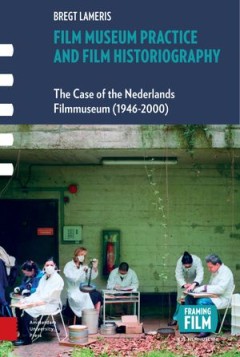
Film Museum Practice and Film Historiography: The Case of the Nederlands Film…
Rich in detail, this is a study of the interrelationships between film historical discourse and archival practices. Exploring the history of several important collections from the EYE Film Museum in Amsterdam, Bregt Lameris shows how archival films and collections always carry the historical traces of selection policies, restoration philosophies, and exhibition strategies. The result is a compe…
- Edition
- -
- ISBN/ISSN
- 9789048526741
- Collation
- -
- Series Title
- -
- Call Number
- 791.43 LAM l
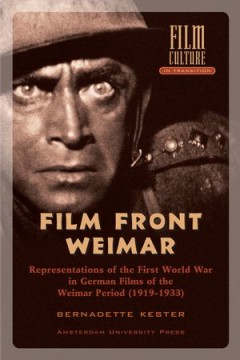
Film Front Weimar
This first book-length study shows how Germany tried to reconcile the horrendous experiences of the FirstWorld War through the films made in 1919-1933. Drawing on the analysis of twenty-five such films, and covering a wide range of documentaries as well as feature films on the reasons for the outbreak of the war, life at the front,war at sea and the home front, the author sketches out the histo…
- Edition
- -
- ISBN/ISSN
- 9789053565988
- Collation
- -
- Series Title
- -
- Call Number
- 791 KES f
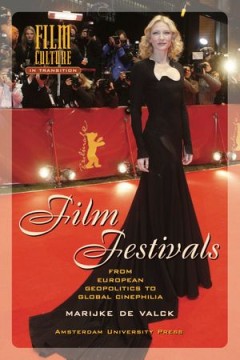
Film Festivals: From European Geopolitics to Global Cinephilia
Film festivals are hugely popular events that attract lovers of cinema worldwide. Focusing on the world's most famous festivals - Cannes, Berlin, Venice and Rotterdam - Film Festivals tells the story of a phenomenon that began in the midst of geopolitical disputes in war-torn Europe. De Valck shows how festivals turned the odds into advantages and developed into a successful global network. Tak…
- Edition
- -
- ISBN/ISSN
- 9789053561928
- Collation
- -
- Series Title
- -
- Call Number
- 791.43 VAL f
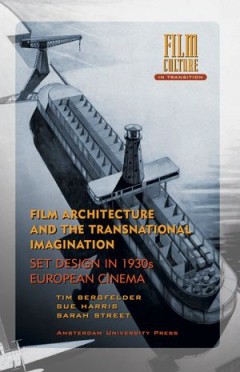
Film Architecture and the Transnational Imagination: Set Design in 1930s Euro…
Film Architecture and the Transnational Imagination presents for the first time a comparative study of European film set design in the late 1920s and 1930s; based on a wealth of designers' drawings, film stills and archival documents, the book offers a new insight into the development and significance of trans-national artistic collaboration during this period. European cinema from the late 192…
- Edition
- -
- ISBN/ISSN
- 9789053569801
- Collation
- -
- Series Title
- -
- Call Number
- -
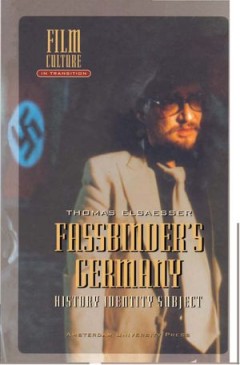
Fassbinder's Germany
Rainer Werner Fassbinder is one of the most prominent and important authors of post-war European cinema. Thomas Elsaesser is the first to write a thoroughly analytical study of his work. He stresses the importance of a closer understanding of Fassbinder's career through a re-reading of his films as textual entities. Approaching the work from different thematic and analytical perspectives, Elsae…
- Edition
- -
- ISBN/ISSN
- 9789053560594
- Collation
- -
- Series Title
- -
- Call Number
- 791 ELS f
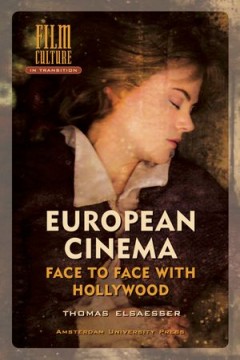
European Cinema: Face to Face with Hollywood
In the face of renewed competition from Hollywood since the early 1980s and the challenges posed to Europe's national cinemas by the fall of the Wall in 1989, independent filmmaking in Europe has begun to re-invent itself. European Cinema: Face to Face with Hollywood re-assesses the different debates and presents a broader framework for understanding the forces at work since the 1960s. These in…
- Edition
- -
- ISBN/ISSN
- 9789053565940
- Collation
- -
- Series Title
- -
- Call Number
- 791.43 ELS e
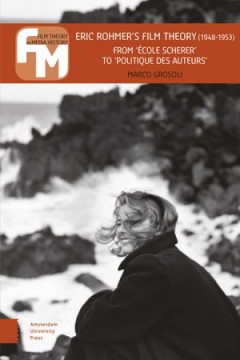
Eric Rohmer's Film Theory (1948-1953): From 'école Scherer' to 'politique de…
In the 1950s, a group of critics writing for Cahiers du Cinéma launched one of the most successful and influential trends in the history of film criticism: auteur theory. Though these days it is frequently usually viewed as limited and a bit old-fashioned, a closer inspection of the hundreds of little-read articles by these critics reveals that the movement rested upon a much more layered and …
- Edition
- -
- ISBN/ISSN
- 9789048537037
- Collation
- -
- Series Title
- -
- Call Number
- 791.43 GRO e
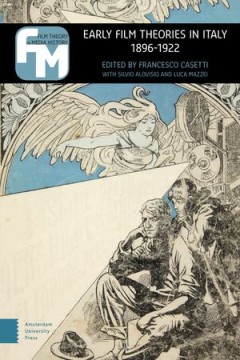
Early Film Theories in Italy, 1896-1922
This collection is the first to bring together scholars to explore the ways in which various people and groups in Italian society reacted to the advent of cinema. Looking at the responses of writers, scholars, clergymen, psychologists, philosophers, members of parliament, and more, the pieces collected here from that period show how Italians developed a common language to describe and discuss t…
- Edition
- -
- ISBN/ISSN
- 9789048527106
- Collation
- -
- Series Title
- -
- Call Number
- 791.43 MAZ m
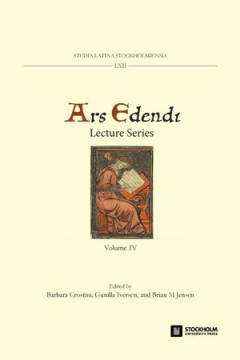
Ars Edendi Lecture Series, vol. IV
"The Ars Edendi Lectures have been organized by the research programme at Stockholm University funded by Riksbankens Jubileumsfond during the years 2008-2015, with a focus on editorial methods for dynamic textual traditions of medieval Greek and Latin texts. This fourth volume gathers contributions both on the fundamentals of editing, as in Glenn Most ‘What is a critical edition?’, and look…
- Edition
- Vol. 62.0
- ISBN/ISSN
- 9789176350393
- Collation
- -
- Series Title
- -
- Call Number
- -
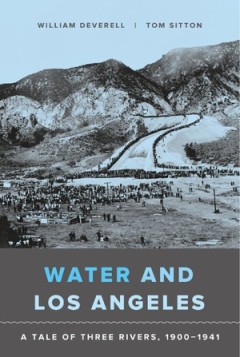
Water and Los Angeles
Los Angeles rose to significance in the first half of the twentieth century by way of its complex relationship to three rivers: the Los Angeles, the Owens, and the Colorado. The remarkable urban and suburban trajectory of southern California since then cannot be fully understood without reference to the ways in which each of these three river systems came to be connected to the future of the me…
- Edition
- -
- ISBN/ISSN
- 9780520965973
- Collation
- -
- Series Title
- -
- Call Number
- -
 Computer Science, Information & General Works
Computer Science, Information & General Works  Philosophy & Psychology
Philosophy & Psychology  Religion
Religion  Social Sciences
Social Sciences  Language
Language  Pure Science
Pure Science  Applied Sciences
Applied Sciences  Art & Recreation
Art & Recreation  Literature
Literature  History & Geography
History & Geography